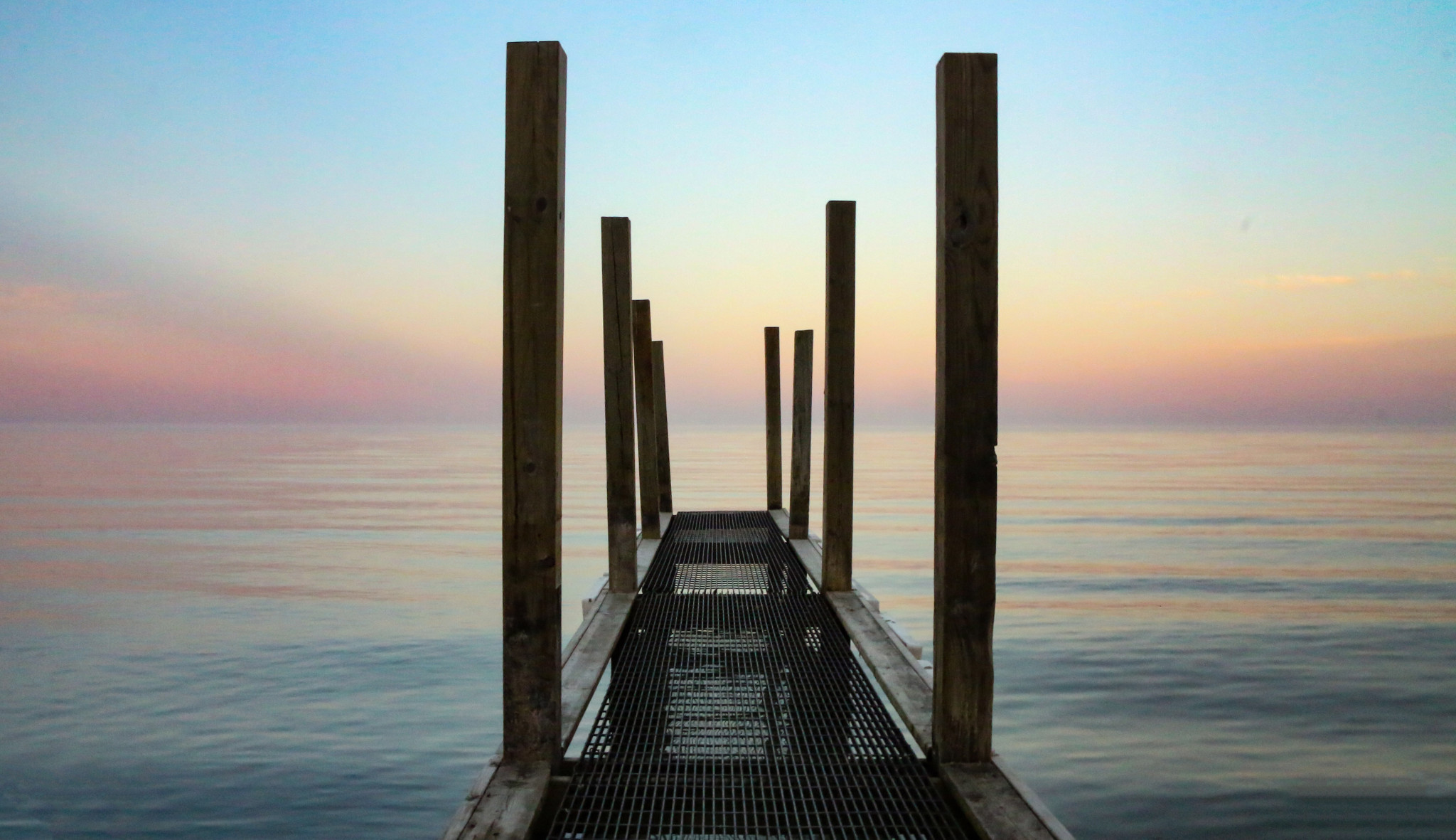EM Insight 2025 Quarter 3: July - September
Quarterly News and Highlights from the Environmental Management (EM) Division

The EM Insight is a quarterly report from the Wisconsin Department of Natural Resources (DNR) Environmental Management (EM) Division that profiles some of the great results that our staff, teams and partnerships have achieved. The division is pleased to present the following highlights of our work from July - September 2025.
In This Edition
Headline News
DNR Completes Statewide Cleanup Efforts At Former 5R Facilities Associated With 2021 Wisconsin Act 234
This fall, the DNR and contractors completed cleanup efforts at properties in Price, Rusk and Washington counties that were used by a now-defunct electronics processor to store large volumes of electronic scrap and hazardous materials. This marked the final chapter in a long enforcement case that dozens of DNR staff members worked on over the last decade and a half.
The company, 5R Processors, was the subject of a federal criminal case that resulted in convictions of top officials. Between 2011 and 2016, 5R concealed the illegal storage and transport of crushed leaded glass at facilities in Ladysmith, Glen Flora, Catawba and West Bend. Due to a lack of funds available from the now-defunct company, the state appropriated funds for the cleanup through 2021 Wisconsin Act 234. In total, cleanup efforts cost $4.6 million. Total dollars expended for site locations included approximately $824,000 in Ladysmith, roughly $1.3 million in Catawba and approximately $2.4 million in West Bend.
Cleanup efforts removed 1.5 million pounds of crushed cathode ray tube glass; 64,858 pounds of non-crushed cathode ray tube glass; 694,571 pounds of mixed electronics with monitors; 87,076 pounds of mixed electronics without monitors; 139,633 pounds of equipment with refrigerant; 264,156 pounds of scrap plastic; 65 pounds of elemental mercury; and other hazardous waste materials. The city of West Bend removed an additional 64 roll-off dumpsters of solid waste from the West Bend site, and the U.S. Environmental Protection Agency (EPA) also led an asbestos abatement effort to ensure this site was suitable for cleanup efforts.
Brownfield Redevelopment Featured In Fall 2025 NR Magazine
Efforts to clean up contaminated properties for redevelopment with the support of the state's Remediation and Redevelopment Program (RR program) are a feature in the fall issue of the Natural Resources Magazine. The article highlights the unique and successful projects in the cities of Brillion and Superior that created destinations for work and play while improving the environment. Find more brownfield success stories by visiting the interactive Wisconsin Brownfield Success Stories map.
Photo Contest Winners Capture The Natural Beauty Of Wisconsin's Great Waters
Winning entries from the annual Wisconsin's Great Waters Photo Contest are featured in the Wisconsin's Great Waters 2025-2026 Calendar, published by the DNR's Office of Great Waters. Also included in the calendar are poems and short stories from the Great Waters Writing Project — each sharing how people connect with and value our Great Waters. The new calendar is available in print and can also be viewed online on the DNR's Great Waters 2025 Photo Contest and Writing Project webpage.
We appreciate all the contributions from our participating photographers and writers who inspire stewardship of these vast yet vulnerable resources. To receive a copy of the new calendar, contact Susan Tesarik at Susan.Tesarik@Wisconsin.gov or 608-977-2416.
The Office of Great Waters is now accepting photos and writings for next year's contest. Learn more on the DNR's webpage for the Wisconsin's Great Waters Annual Photo Contest and Writing Project.
Healthy Lakes & Rivers Initiative Celebrates 10 years
The Wisconsin Department of Natural Resources is celebrating a milestone year for the statewide Healthy Lakes & Rivers (HLR) initiative. Launched in 2015 in collaboration with the Wisconsin Lakes and Rivers Partnership, HLR aims to protect and restore the health of the state's lakes and rivers by increasing property owner participation in habitat restoration, runoff and erosion control projects. The initiative is based on five simple and inexpensive best practices that improve habitat and protect water quality: fish sticks, native shoreline plantings, water diversion practices, rock infiltration practices and rain gardens.
HLR provides shoreland property owners with fact sheets and step-by-step technical guidance documents for each practice. The website also features a free shoreland evaluation tool, “Score My Shore,” that walks property owners through a series of questions about the physical aspects of their lake or river property as well as how they manage it. Survey users receive a unique shoreland health score and recommendations on how to protect water quality and habitat.
Local partners such as lake and river organizations, municipalities, counties and tribal governments may apply for a HLR cost-share grant on behalf of shoreland property owners. Funding is available for up to $1,000 per practice installed with a grant cap of $25,000. Grant applications are accepted year-round through the DNR Surface Water Grant program. Thanks to the efforts of local grant sponsors across Wisconsin, more than 1,100 landowners across 205 lakes and rivers and 38 counties have received funding assistance from the DNR to install HLR best practices since 2015. More information about Healthy Lakes & Rivers practices, grants and resources for shoreland landowners can be found on the HLR website.
RR Program Hosts Sessions For Local Government On Brownfield Redevelopment
More than 100 representatives of local governments across Wisconsin attended one of four sessions on brownfield redevelopment hosted by the Remediation and Redevelopment (RR) Program. The in-person sessions offered an opportunity for the local governments to learn more about how to make redevelopment of a contaminated property a success. Presenters covered liability considerations and due diligence recommended when acquiring brownfield properties and offered an overview of the technical and financial assistance available to support redevelopment efforts. Presenters included the DNR, Wisconsin Economic Development Corporation (WEDC) and representatives from other local governments. More information about understanding brownfields and the benefits of redevelopment is available on the DNR's website.
New And Updated Resources
DNR Launches Updated Air Quality Data Map
The Wisconsin Department of Natural Resources (DNR) has improved its air quality data map to help the public stay "air aware."
The map displays real-time data from the state's air quality monitoring network and provides a color-coded guide to pollution levels based on the Air Quality Index (AQI). The latest updates offer a more intuitive and user-friendly experience, making it easier to stay informed about air quality.
Changes include:
- A new advisory banner, prominently displayed as a top scrolling bar, ensures that critical air quality updates are instantly visible.
- A dedicated "News" text box on the landing page highlights important updates, including air quality advisories and other essential information.
- Enhanced navigation features, including a sleek set of map menu icons on the right-hand side of the screen, eliminates the need to search through dropdown menus – offering an app-like experience for seamless access.
- A new "Orange or Above" AQI filter makes it easier for users to quickly identify when air quality reaches levels that could impact health. During periods of poor air quality across Wisconsin (such as ozone advisories or the wildfire smoke events experienced this summer), users can toggle the map filter to provide clear visual guidance to help communities stay informed and make safer decisions.
Annual Reports
Annual Drinking Water Report Released
The Drinking Water and Groundwater Program published its 2024 Annual Drinking Water Report on June 27, summarizing compliance of the state's public water systems with drinking water requirements for the year. Wisconsin had a high rate of compliance with water quality standards, and 99.5% of public water systems met all maximum contaminant levels during the year. Working to provide safe drinking water is successful thanks to Wisconsin's strong collaborative efforts involving agencies, water system owners and operators, professional organizations and water consumers. More details are available in the report, which is published on the DNR's Annual Drinking Water Reports webpage.
Groundwater Coordinating Council Releases 2025 Report to the Legislature
The Groundwater Coordinating Council (GCC) recently shared its recommendations for protecting and preserving the state's vital groundwater resources in its 2025 annual report to the Wisconsin State Legislature. The recommendations address the most prevalent and pressing groundwater issues in Wisconsin.
The full report can be found on the Groundwater Coordinating Council Report to the Legislature webpage.
Social Media Spotlight
Air quality updates during the Canadian wildfires
- 936,788 impressions on Facebook
- 614,263 impressions on Nextdoor
Did you know that food "best by" date labels don't matter as much as we sometimes think they do?
The 2025-2026 Wisconsin's Great Waters Calendar is here!
This just in: The Groundwater Coordinating Council (GCC) released its report to the State Legislature, and you can read it, too.
